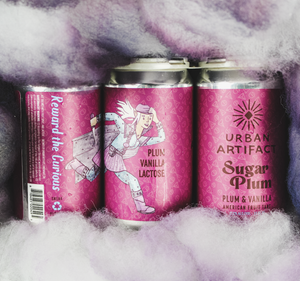Malt, oh glorious malt. Thankfully barley is unsuitable for baking bread of any quality fit for kings (not to mention it would have made the price of bread skyrocket) but it is the perfect ingredient for the brewing of beer! Barley is a unique ingredient when it comes to beer. It is the main starch and sugar source for a variety of reasons (legally, practically, and because it tastes better), it provides the color which ranges from pale yellow to black, gives the beer body and mouthfeel, and prettiest of all it makes the foamy head on beer possible.
Malt also constitutes the single largest ingredient, outside of water, found in most beers. Therefore, one would think malt imparts a large amount of terroir into any given beer, however, that is not the case. Due to the relatively recent impact of globalization (both good and bad) and industrialization, there has been a large homogenization of agriculture products, and malting barley is one of those victims. While largely a good thing, barley has been and continues to be slowly manipulated to increase yields, increase disease resistance and overall perform a better job for the brewer. What has been lost in all of this rapid global economic expansion is variety, specifically in terms of barley species, growing locations and maltsters.
Large brewers and small brewers alike strive for consistency. However, large brewers have the buying power and capacity to demand consistency from their suppliers. This pressure causes malting barley growers to focus on yields and one specific type of barley and causes maltsters to manufacturer and blend out any batch or crop year inconsistencies. Due to the massive buying power of these companies, there is little incentive to research and innovate in terms of barley crop flavors. These massive pressures on growers and maltsters limit any smaller breweries ability to buy malt based on location, variety, and most importantly flavor. Rather, every brewer essentially has the same list of malts to choose from, essentially eliminating any unique terroir that is possible. A sad thought in this world of limitless beer opportunities.
Do not fret for too long, as all is not lost. There are a small but intrepid number of growing independent maltsters and malting barley growers. It is often times difficult, expensive and time-consuming for brewers to track down these suppliers and purchase from them, but the rewards, even if they are purely mental, are more than worth the effort. A beer brewed with local grain that has literally come from the earth on which your brewery stands is a romantic and tasty thought indeed, and one that some breweries strive for in an effort to express their own terroir. More and more, state governments are also recognizing the benefits of locally grown ingredients, if only for economic reasons it is still a tasty proposition. New York has implemented farm brewery legislation that gives tax discounts and other special benefits for breweries that use a large percentage of locally grown ingredients, hops, and barley. What a wonderful incentive program that not only spurs economic growth in a state, it also helps an entire region develop its own beer flavors and culture! What a time to be alive and drink beer.
Cheers,
Bret Kollmann Baker
Chief of Brewing Operations








